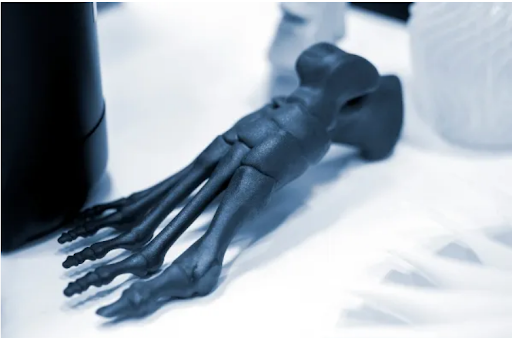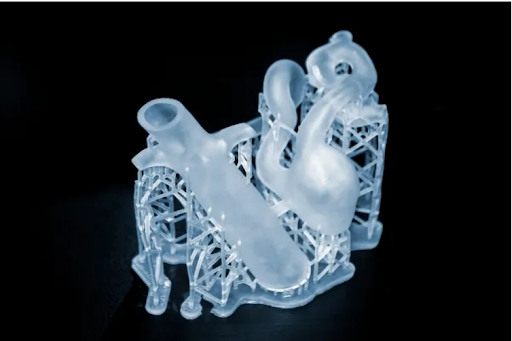Adelaide, located in South Australia, is vital to Australia’s thriving healthcare industry. With world-class medical facilities and a robust healthcare ecosystem, the city has become a hub for medical research, education, and patient care. The healthcare sector in Adelaide encompasses hospitals, research institutions, pharmaceutical companies, and medical device manufacturers.
Economically, the healthcare industry in Adelaide contributes significantly to the growth of the Australian economy. It generates substantial revenue and employment opportunities, making it a cornerstone of the nation’s economic prosperity. Moreover, Adelaide’s healthcare sector benefits from considerable government investments in research and development, ensuring ongoing innovation and advancements.
Overview of How Adelaide is Utilising 3D Printing in Healthcare
Adelaide, a hub of innovation in Australia, has made significant strides in healthcare by embracing 3D printing technology. This cutting-edge technology is transforming how medical professionals operate, bringing about remarkable patient care and treatment advancements.
Adelaide’s 3D printing services have become indispensable in the healthcare landscape. One of the most notable applications is in custom implants and prosthetics. Surgeons can now create patient-specific implants, ensuring a perfect fit and minimising complications. Additionally, the technology enables the production of intricate anatomical models for pre-surgical planning, allowing for more precise and efficient procedures.
Another area where Adelaide is harnessing 3D printing is in pharmaceuticals. Personalised medicine is on the rise, and 3D printing allows for the fabrication of tailored drug delivery systems and dosage forms, optimising treatment outcomes.
Furthermore, research institutions and medical facilities in Adelaide are actively exploring the potential of 3D bioprinting to produce tissues and organs for transplantation, offering new hope to patients in need.
Historical Context of 3D Printing in Medicine
Early Adoption and Experiments in Medical 3D Printing:
- In the 1980s, 3D printing technology emerged as a novel concept.
- Medical professionals recognised its potential for revolutionising healthcare.
- Early experiments involved creating anatomical models and prosthetics.
- Surgeons used 3D-printed models for surgical planning and education.
- This era laid the foundation for future medical 3D printing applications.
Milestones and Breakthroughs in Medical 3D Printing Technology:
- 1990s: The development of medical-grade materials for 3D printing expanded possibilities.
- 2000s: Customised implants and prosthetics became feasible, improving patient outcomes.
- 2010s: Bioprinting advanced with the printing of functional tissues and organs.
- 2015: The first 3D-printed drug, Spritam, gained FDA approval.
- 2017: A patient received a 3D-printed titanium sternum and ribcage.
- 2020s: Medical 3D printing accelerated during the COVID-19 pandemic for producing ventilator parts and face shields.
In Adelaide, Australia, institutions like Flinders University and the Royal Adelaide Hospital have actively contributed to the growth of medical 3D printing. The historical evolution of 3D printing in medicine showcases how this innovative technology has transformed healthcare, offering customised solutions and improving patient care across the globe.

Medical Applications of 3D Printing
- Customised Prosthetics and Orthopaedics – One of the most significant advancements in medical 3D printing is the production of customised prosthetic limbs and orthopaedic implants. Adelaide has witnessed a surge in the availability of 3D printing services, specialising in creating tailor-made solutions for patients with limb loss or orthopaedic issues. These prosthetics and implants are not only comfortable but also significantly improve the quality of life for individuals.
- Patient-Specific Surgical Guides – Surgeons in Adelaide now have access to patient-specific surgical guides created through 3D printing. These guides help ensure the precision and accuracy of surgical procedures, reducing the margin of error and improving patient outcomes. Whether it’s complex bone surgeries or delicate procedures, 3D printing has become indispensable in the operating room.
- Anatomical Models for Education and Training – Medical schools and training institutions in Adelaide have embraced 3D printing to revolutionise medical education. The ability to produce anatomical models that accurately replicate human structures allows students and healthcare professionals to understand the human body better and practise surgical techniques in a risk-free environment.
- Dental Applications – The field of dentistry has also been significantly impacted by 3D printing technology. Adelaide-based dental clinics and laboratories now use 3D printers to create precise crowns, bridges, and dental implants. This improves the quality and durability of dental work and reduces the time patients spend in the dental chair.
- Patient-Specific Medical Devices – Beyond prosthetics and implants, 3D printing in Adelaide has created patient-specific medical devices like hearing aids and braces. These devices are designed to fit each individual perfectly, ensuring maximum comfort and effectiveness.
- Pharmaceuticals and Drug Delivery Systems – Innovative researchers in Adelaide are exploring 3D printing for pharmaceutical applications. This includes the development of personalised drug delivery systems. By tailoring medication to an individual’s specific needs, 3D printing promises more effective treatments with reduced side effects. Furthermore, this technology enables the rapid production of experimental drug prototypes, expediting drug development.
- Tissue Engineering and Regenerative Medicine – Adelaide is at the forefront of tissue engineering and regenerative medicine, thanks to 3D printing technology. Scientists are employing 3D printers to fabricate intricate scaffolds that replicate the architecture of human tissues and organs. These scaffolds can be used for transplantation and to stimulate tissue regeneration, holding immense promise for patients needing organ replacements.
- Low-Cost Medical Devices – In resource-constrained settings, 3D printing has the potential to produce low-cost medical devices, such as prosthetics and diagnostic equipment, making healthcare more accessible to underserved populations.
What Kind Of 3D Printing Technology Is Employed in The Healthcare Industry?
The healthcare industry utilises several types of 3D printing technologies to create various medical devices, implants, prosthetics, and anatomical models. Among the prevalent 3D printing technologies frequently employed in the healthcare sector are:
- Fused Deposition Modelling (FDM): FDM is one of the most widely used 3D printing technologies. It works by extruding a thermoplastic material through a heated nozzle, solidifying as it cools. FDM is used to create patient-specific anatomical models, surgical guides, and some custom implants.
- Stereolithography (SLA): SLA uses a liquid resin cured by a laser or UV light, layer by layer, to create the final object. SLA is known for its high detail and precision, making it suitable for creating highly accurate anatomical models, dental appliances, and surgical guides.
- Selective Laser Sintering (SLS): SLS utilises a high-powered laser to selectively fuse powdered material (often a polymer) layer by layer. It is commonly used to create complex and durable objects, such as prosthetic limbs, orthopedic implants, and anatomical models.
- PolyJet Technology: PolyJet employs multiple printing nozzles to deposit layers of liquid photopolymer onto a build tray, subsequently solidifying them using UV light.This technology can produce highly detailed and multi-material objects, making it suitable for creating realistic anatomical models, dental restorations, and surgical guides.
- Digital Light Processing (DLP): DLP is similar to SLA in using a liquid resin cured layer by layer. However, DLP uses a digital light source (usually a projector) to cure entire layers at once, which can lead to faster print times. It is used for applications similar to SLA, such as dental models and surgical guides.
- Electron Beam Melting (EBM):Electron Beam Melting (EBM) employs an electron beam to gradually liquefy layers of metal powder, thereby fabricating objects composed of diverse metals.This technology is used to produce custom metal implants, such as hip or knee replacements.
- Laser Powder Bed Fusion (LPBF):LPBF, alternatively referred to as Direct Metal Laser Sintering (DMLS), employs a high-energy laser to selectively fuse metal powder layer by layer. It’s commonly used for producing complex metal implants and surgical instruments.
- Bioprinting: Bioprinting is a specialised form of 3D printing that uses biological materials (such as living cells) to create tissue-like structures. It can potentially revolutionise areas like tissue engineering, organ transplantation, and pharmaceutical testing.
Each of these 3D printing technologies has its advantages and applications within the healthcare industry, enabling a diverse array of medical solutions that can be tailored to meet the unique requirements of each patient.

3D Printing Materials for Medical Industry
The healthcare industry has widely adopted 3D printing technology for various applications, from prototyping medical devices to producing custom implants. Several materials are commonly used in healthcare-related 3D printing processes. Here are some of them:
- Biocompatible Resins: These photopolymer resins are safe for contact with the human body. They are often used in dental applications for crowns, bridges, and temporary braces. They can also be used for hearing aids and other custom-fitted devices.
- Bioinks: These are materials used in bioprinting, a branch of 3D printing that focuses on creating living tissues and organs. Bioinks typically comprise cells, growth factors, and a hydrogel matrix.
- Metal Alloys: Titanium and cobalt-chromium alloys are commonly used in 3D printing for producing implants like hip and knee replacements. They are known for their biocompatibility, corrosion resistance, and high strength-to-weight ratio.
- Polymers (Plastics): Various thermoplastic materials are used in 3D printing for medical devices, prosthetics, and anatomical models. For instance, ABS (Acrylonitrile Butadiene Styrene), PLA (Polylactic Acid), and PEEK (Polyether Ether Ketone) are commonly used for different applications.
- Ceramics: Dental crowns, bridges, and other dental prosthetics are often 3D printed using ceramics. These materials can closely mimic the appearance and properties of natural teeth.
- Hydrogels: These materials are used for bioprinting and are designed to mimic the properties of human tissues. They can be used to create scaffolds for tissue engineering and regenerative medicine applications.
- Nylon (Polyamide): Nylon is used in 3D print for creating durable, flexible, and impact-resistant medical devices. It is often used in applications like orthotics, prosthetics, and surgical instruments.
- PEEK (Polyether Ether Ketone): PEEK is a high-performance polymer known for its excellent mechanical properties, biocompatibility, and chemical resistance. It is used for creating custom implants and surgical guides.
- Photopolymer Resins for Surgical Guides: These resins are used to create accurate and sterilisable surgical guides for procedures like dental implant placement.
- Alginate: This biocompatible material is used in medical 3D printing, particularly in creating moulds for body parts. It is often used in prosthetic and orthotic applications.
It’s worth noting that the choice of material depends on the specific application, regulatory requirements, and the intended use of the 3D-printed item in the healthcare context. Additionally, advancements in 3D printing technology continue to lead to the development of new and innovative materials for healthcare applications. Always consult with professionals for the most up-to-date information on materials and their uses in healthcare 3D printing.
Future Directions
- Research Collaboration: Collaborations between healthcare institutions, universities, and 3D printing companies in Adelaide can drive innovation.
- Standardisation: Developing industry standards for 3D printing in healthcare will enhance safety and quality.
- Education and Training: Investing in training programmes for healthcare professionals and technicians can facilitate better utilisation of 3D printing.
- Cost Reduction: Efforts to reduce the cost of 3D printing technology and materials will make it more accessible.
- Advanced Materials: Continued research into biocompatible and innovative materials will expand the possibilities of 3D printing in medicine.
- Telemedicine Integration: Integrating 3D printing with telemedicine can improve patient care and accessibility.
- Regulatory Streamlining: Streamlining regulatory processes for 3D-printed medical devices can accelerate adoption.
- Patient-Centric Approach: Prioritising patient-centric applications, such as personalised implants, will shape the future of 3D printing in Adelaide’s healthcare sector.
In conclusion, our exploration of the medical applications of 3D printing in Adelaide has unveiled a promising frontier in healthcare. The utilisation of 3D printing technology has demonstrated its potential to revolutionise patient care, from personalised prosthetics and implants to intricate surgical planning models. This innovative approach not only enhances the precision and efficacy of medical procedures but also offers cost-effective solutions. However, it is imperative that stakeholders in the medical and technological fields continue to collaborate and invest in research to further harness this transformative technology. With continued development and integration, 3D printing holds the power to redefine the landscape of healthcare in Adelaide and beyond.





